

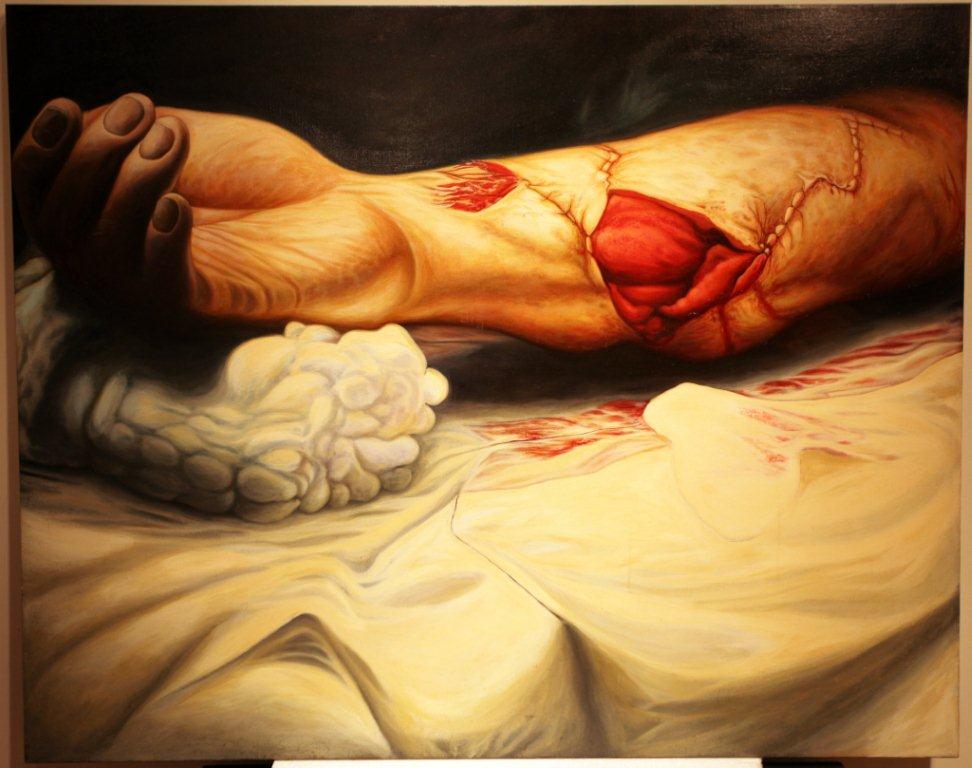
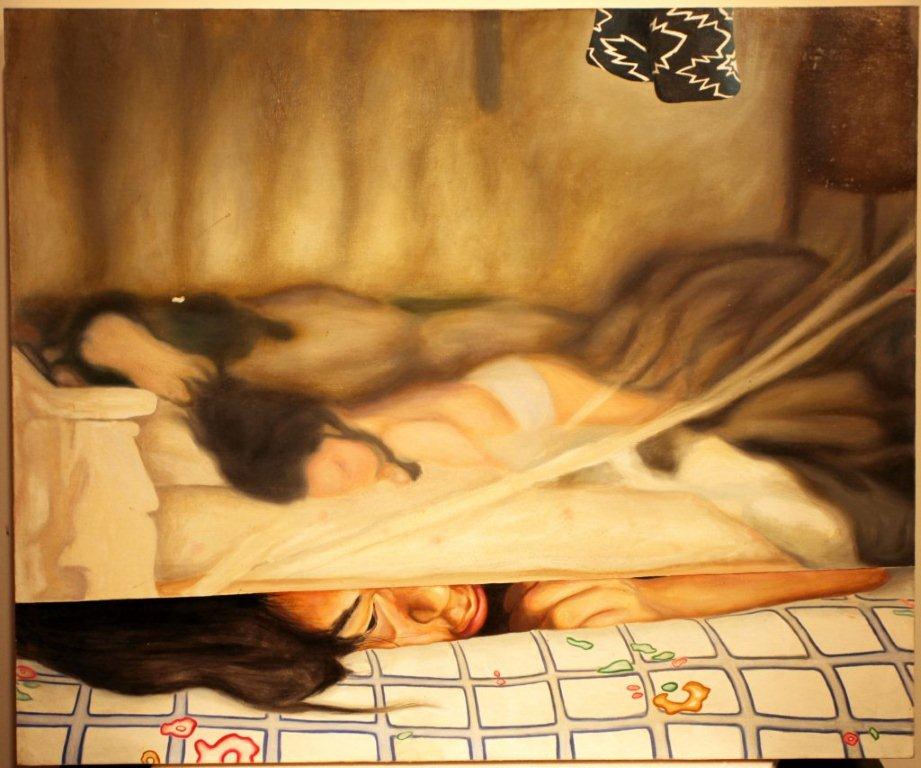
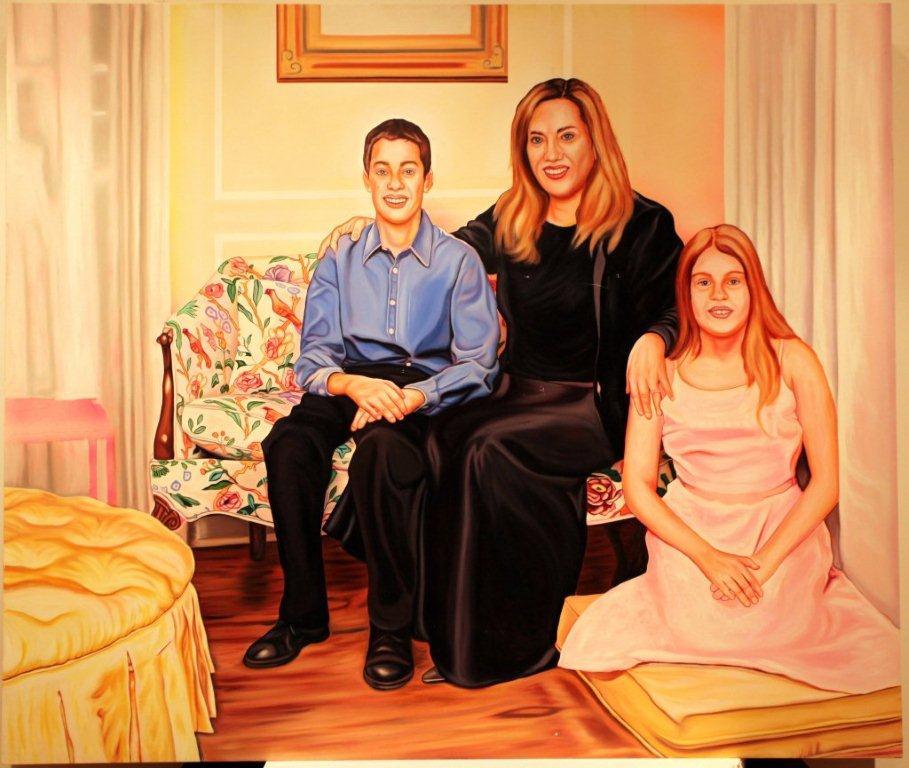
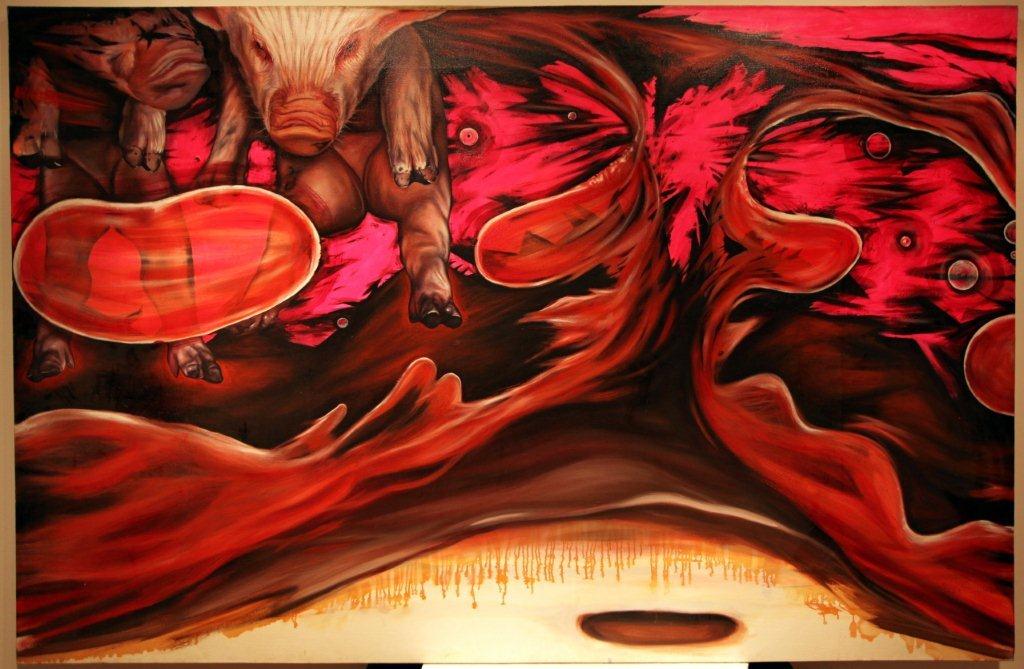
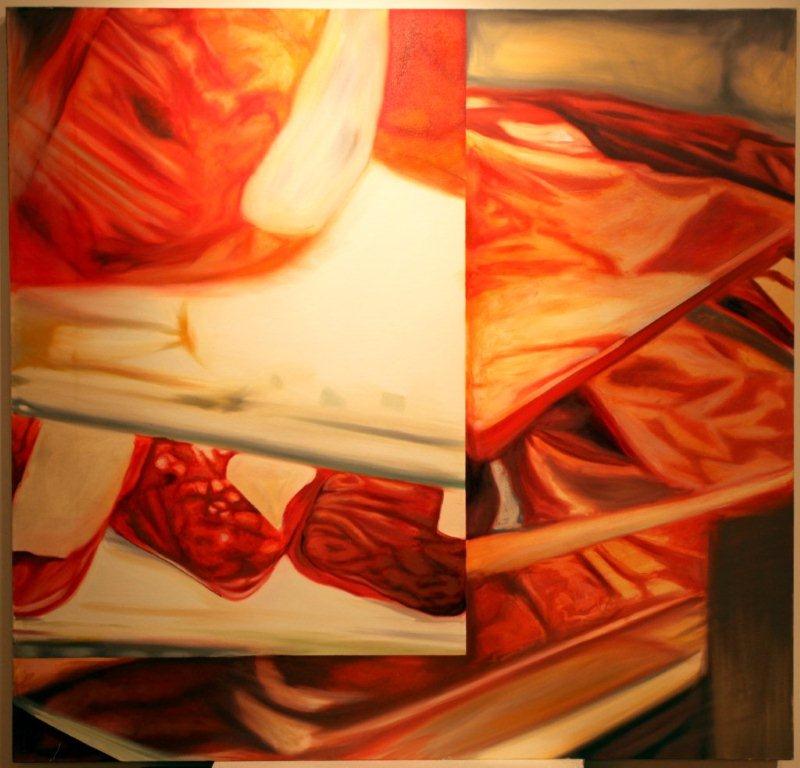

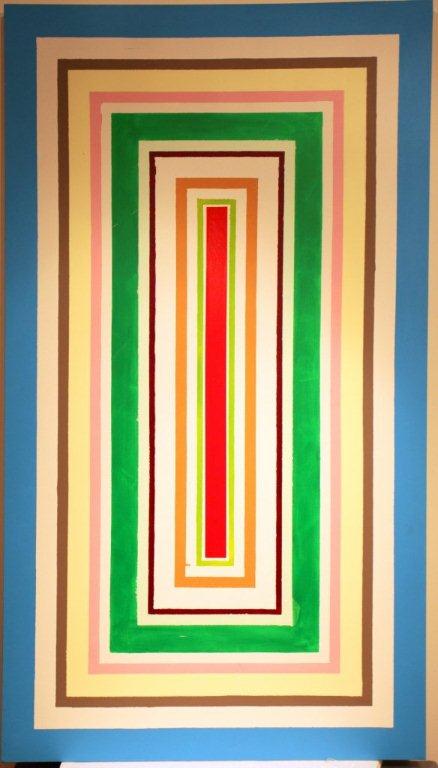
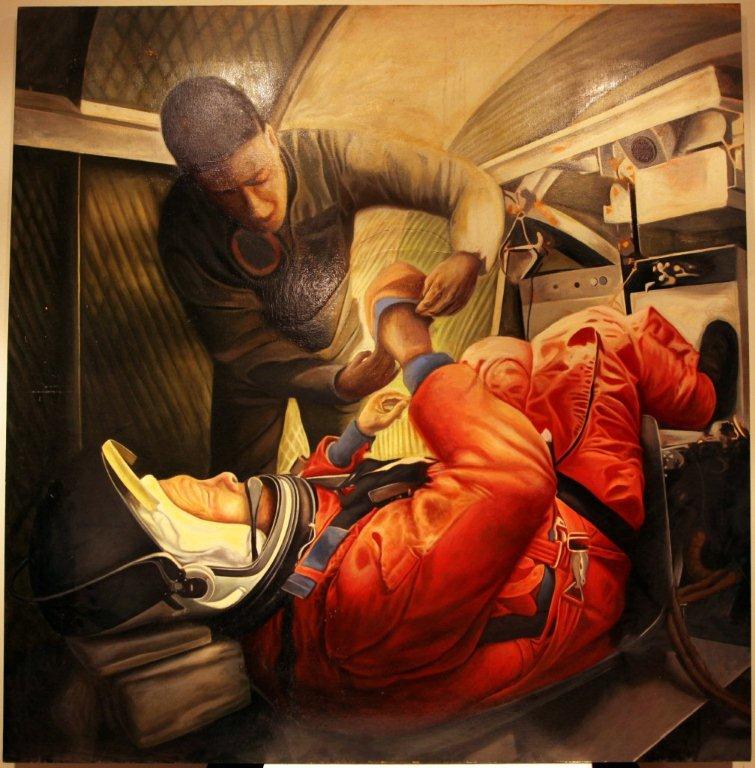
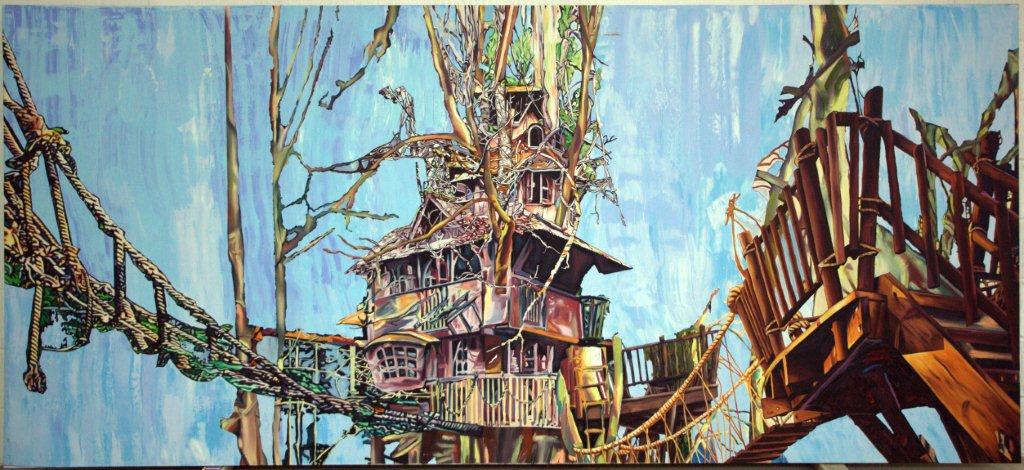
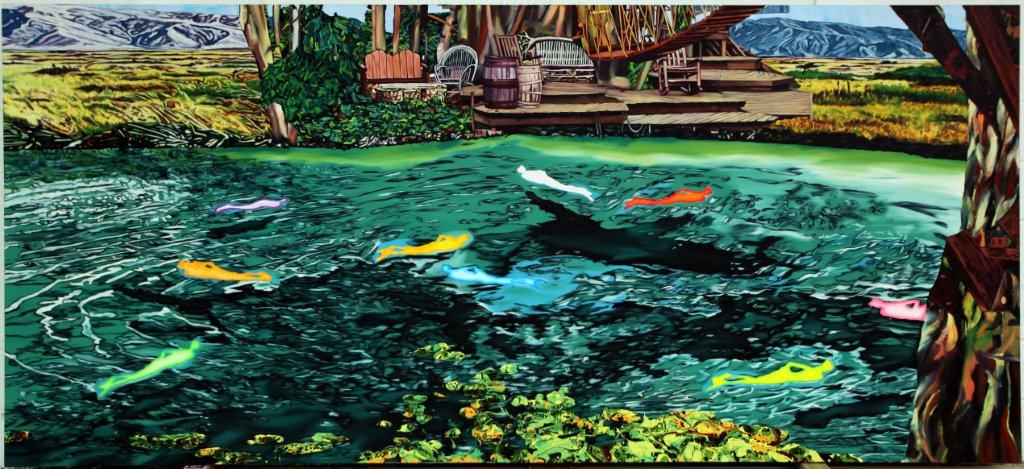
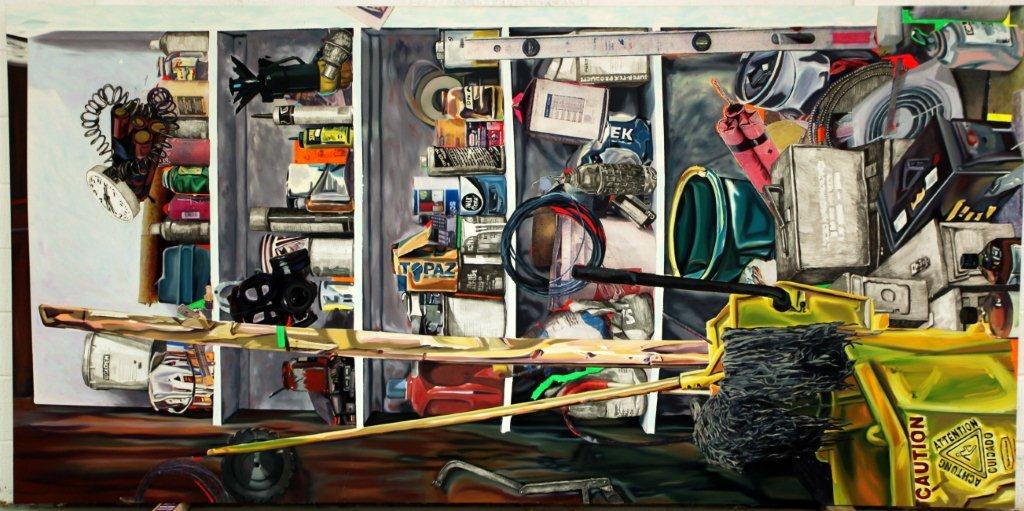
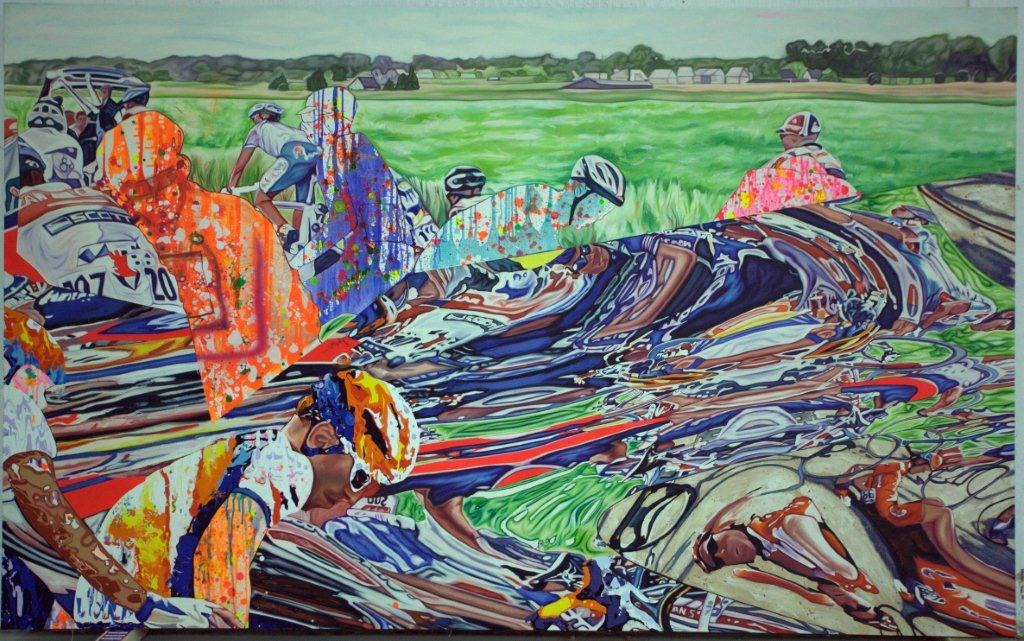
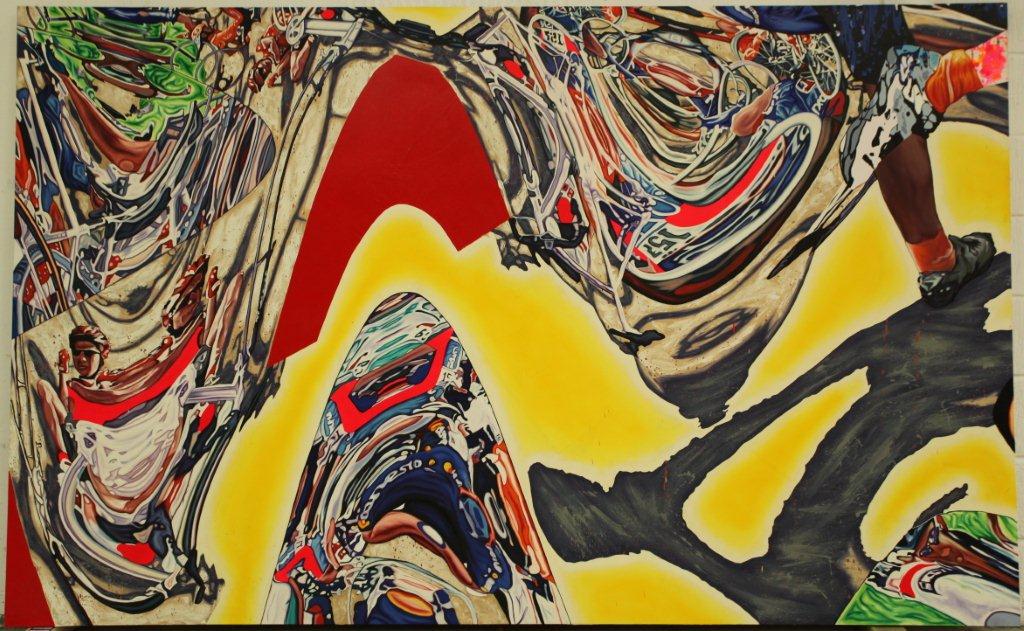
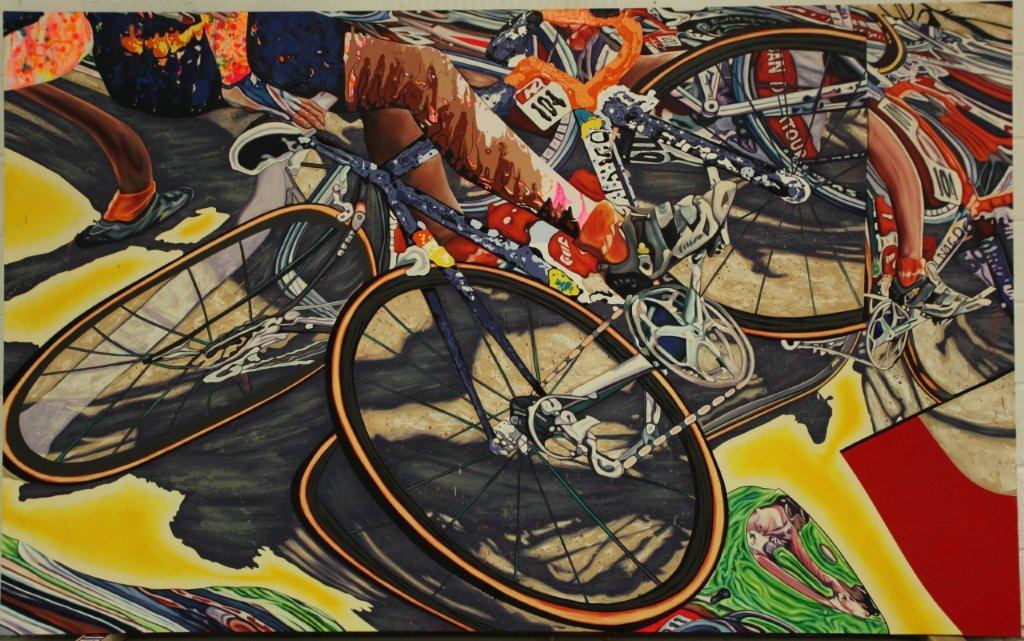
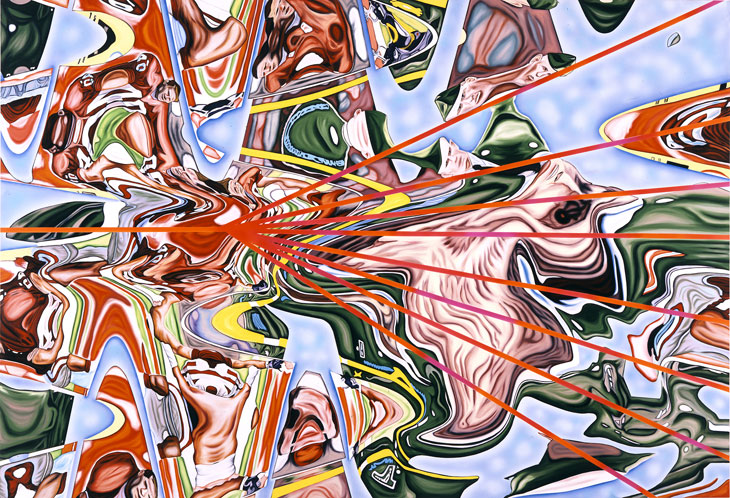
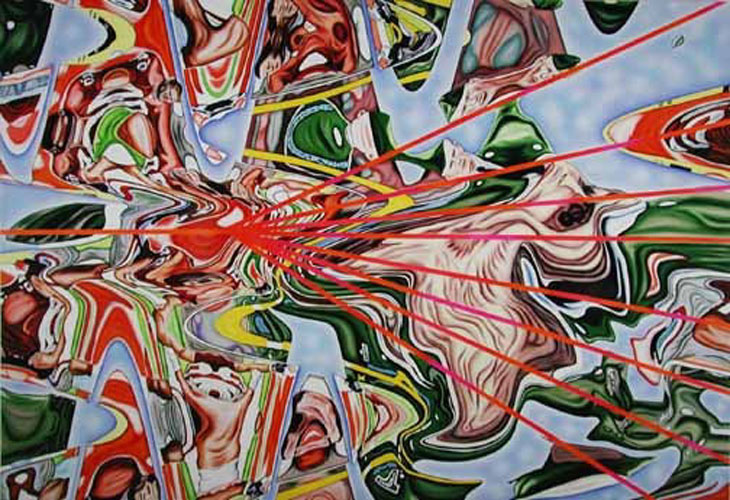
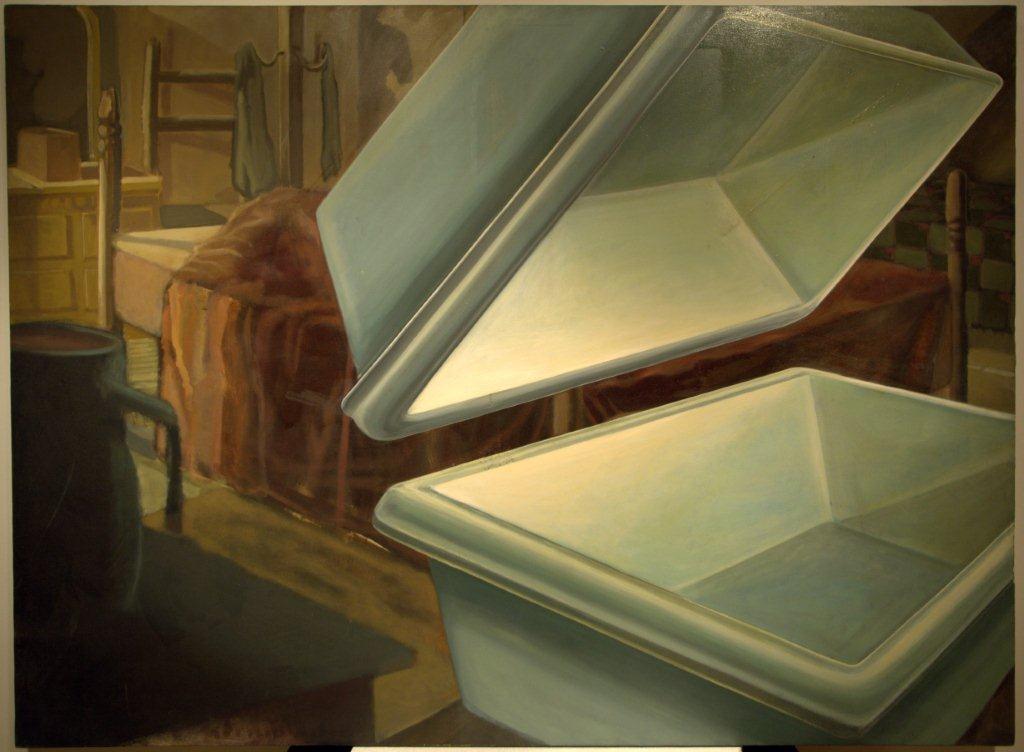
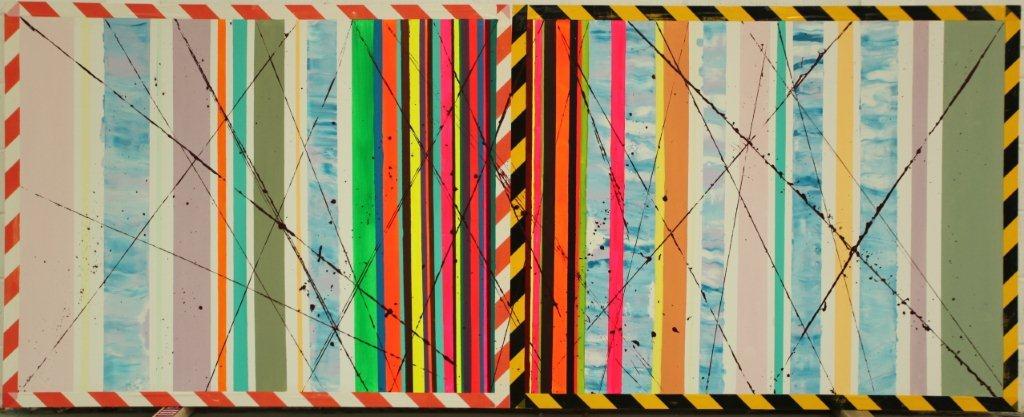
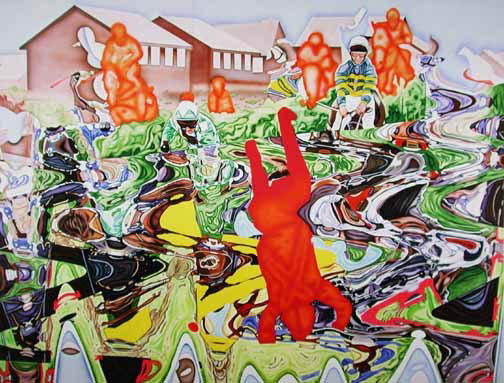
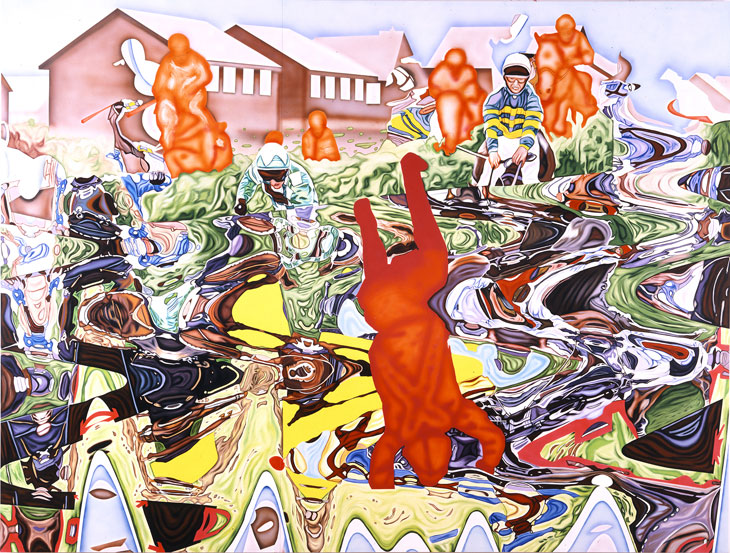
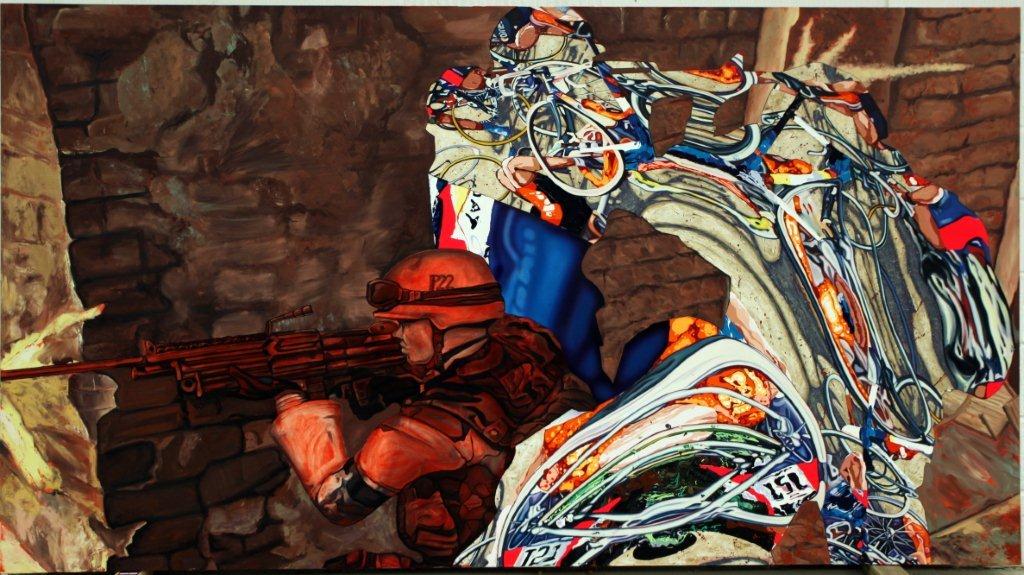
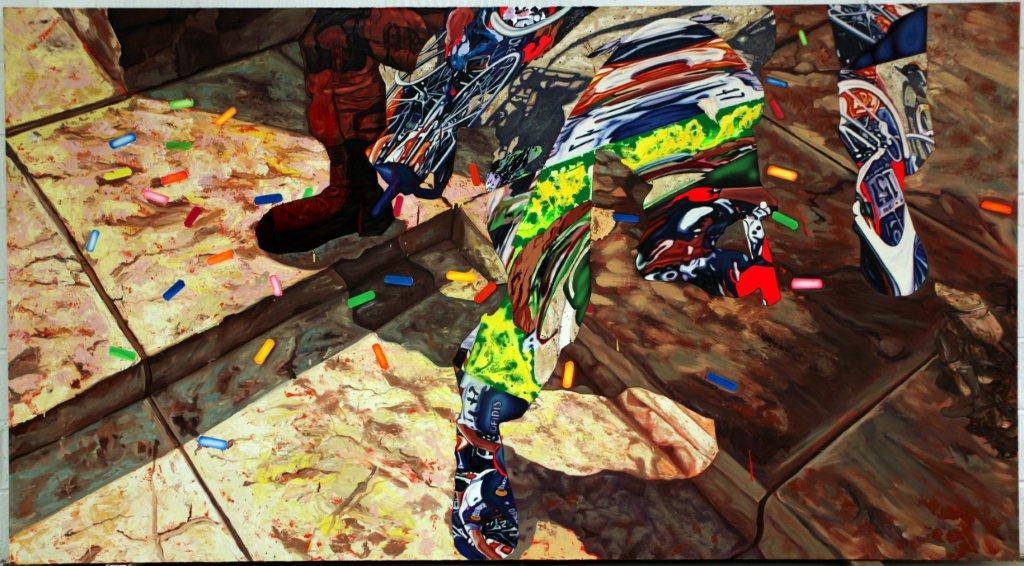
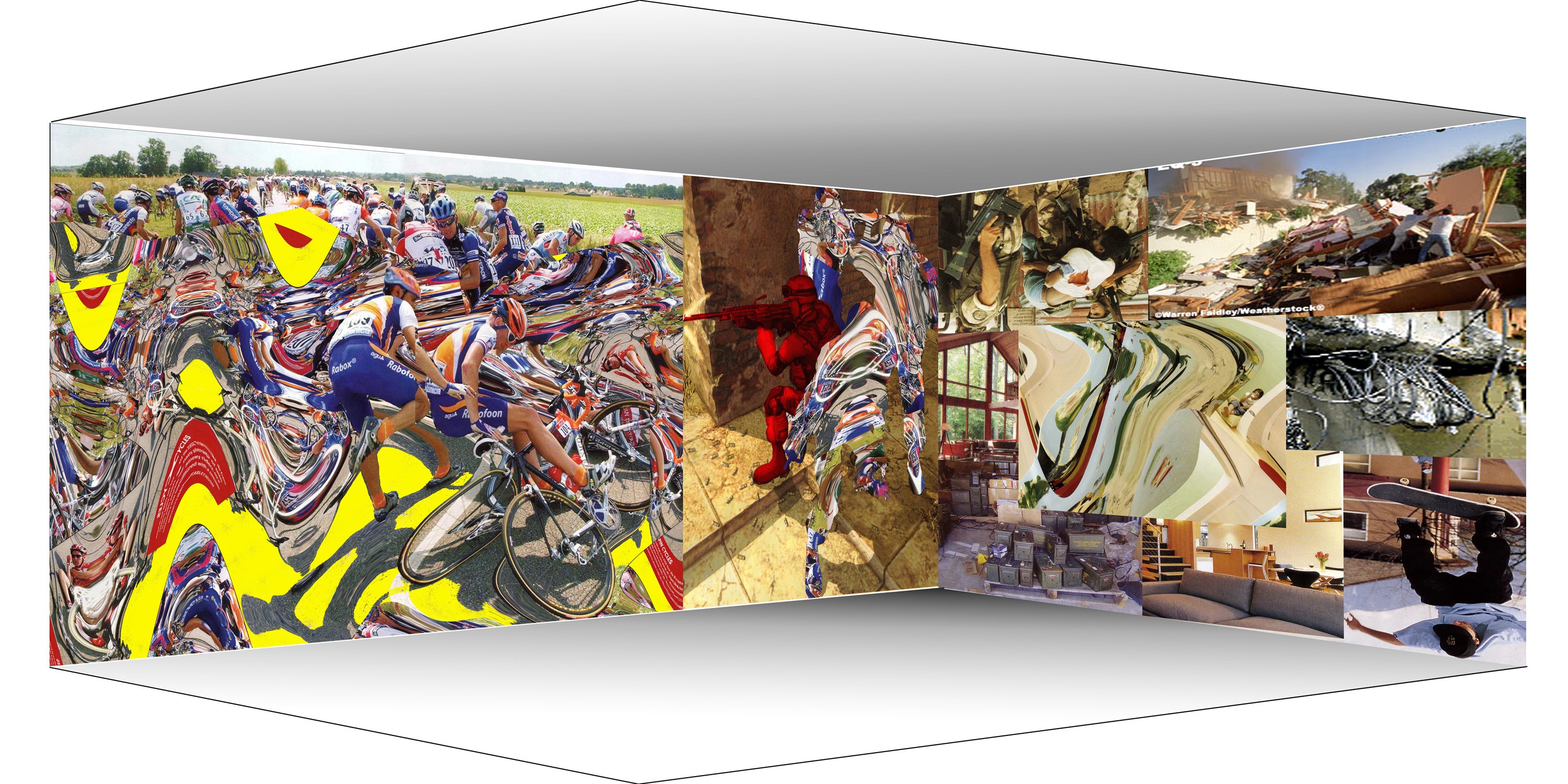
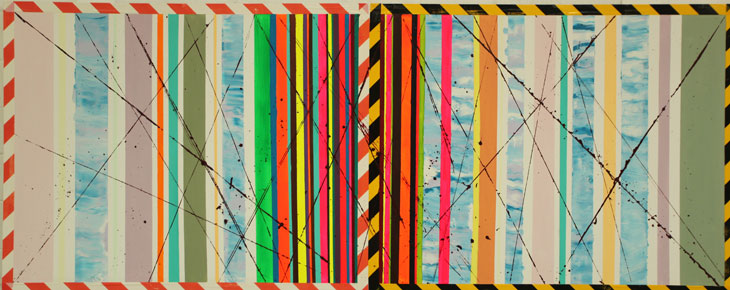
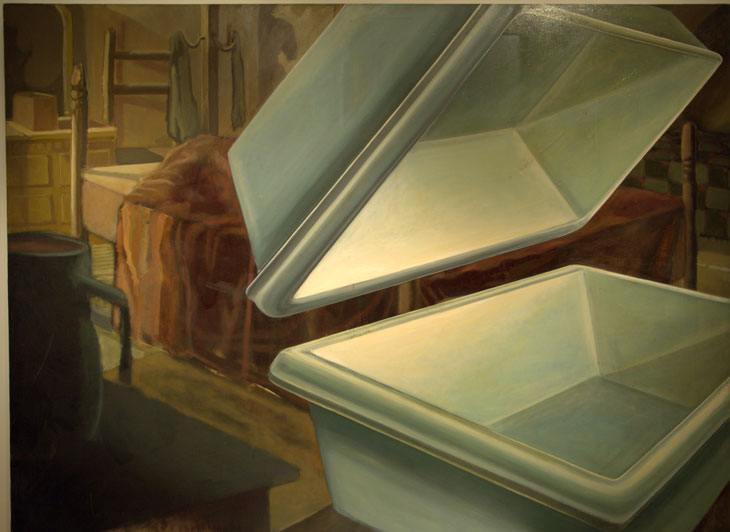
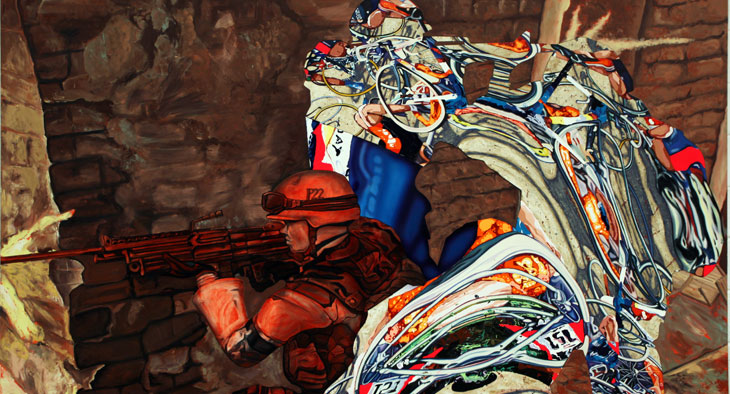
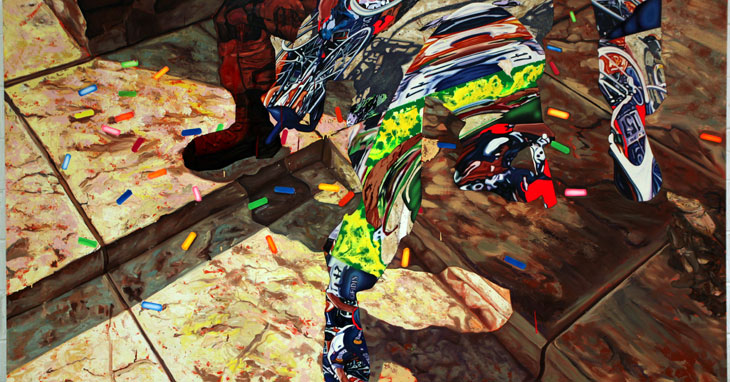
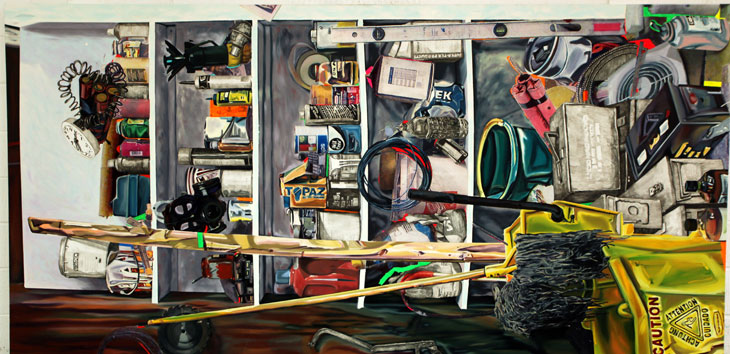
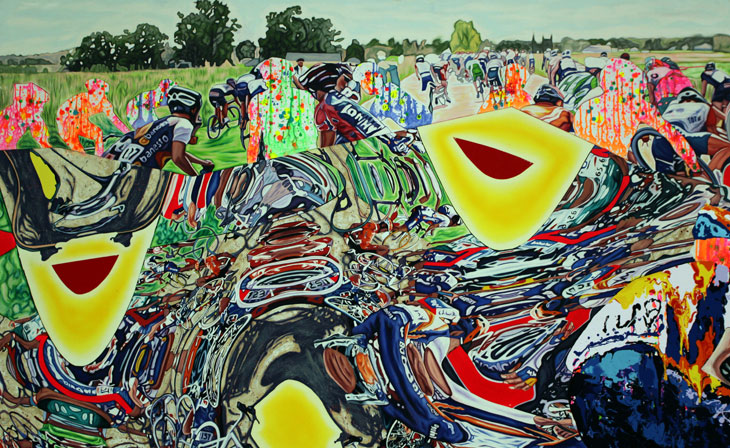
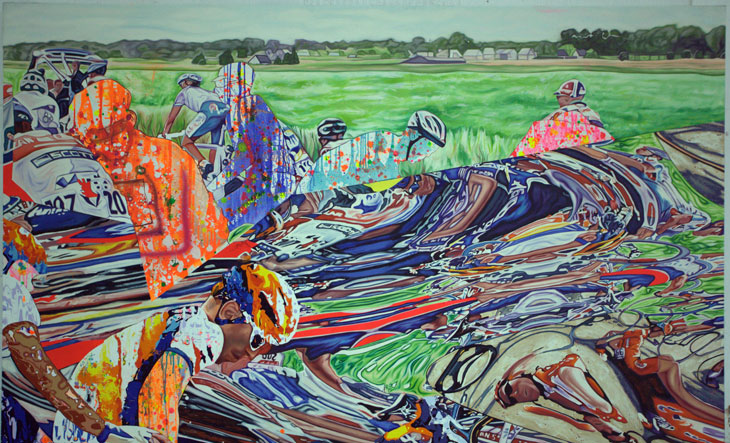
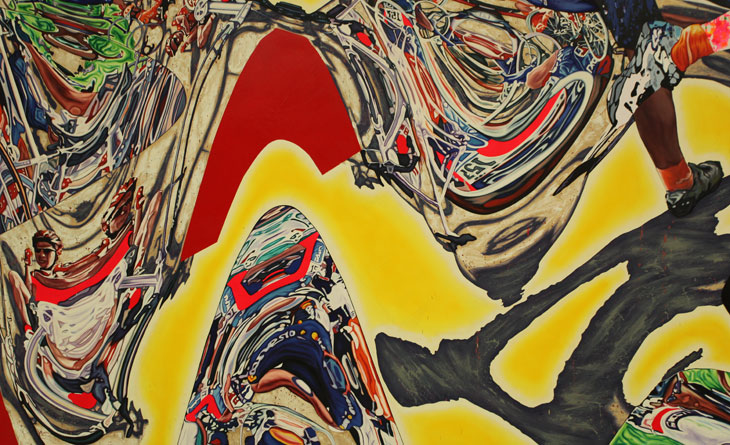
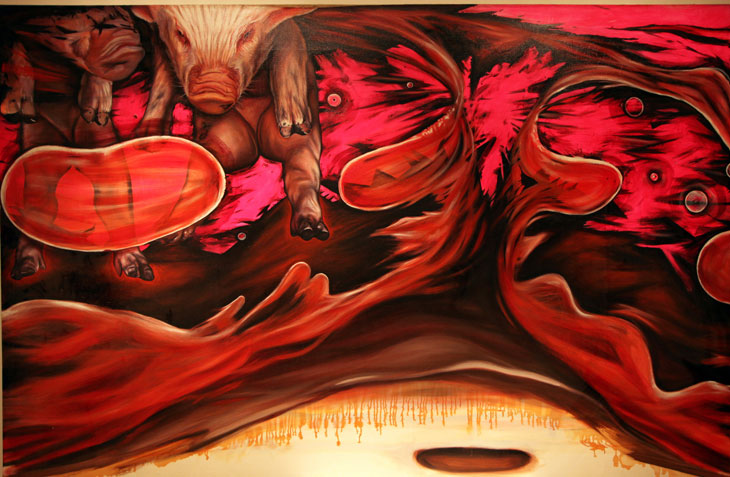
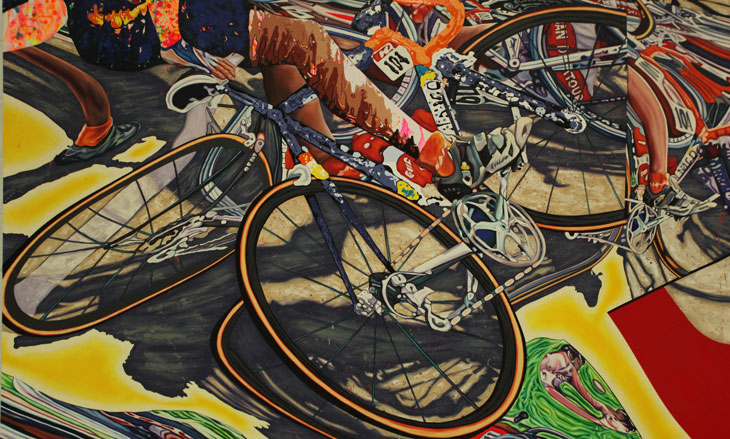
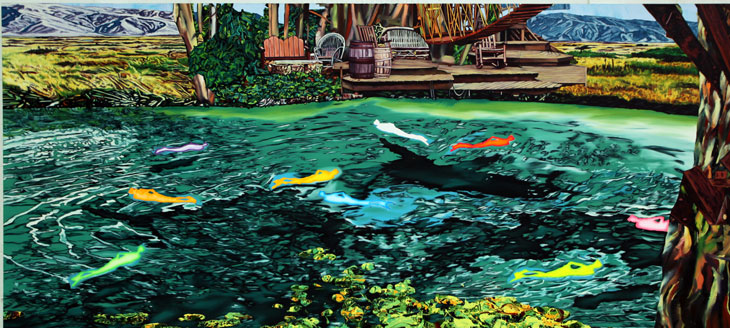
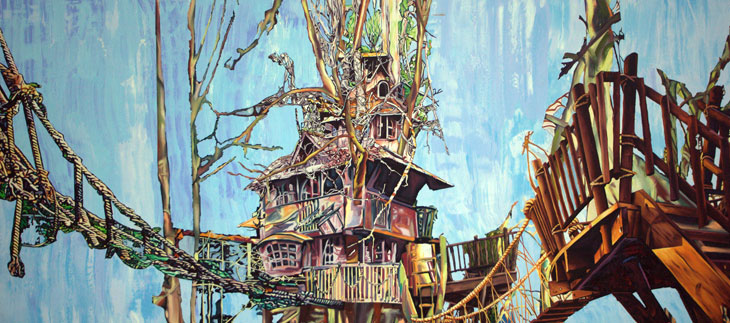
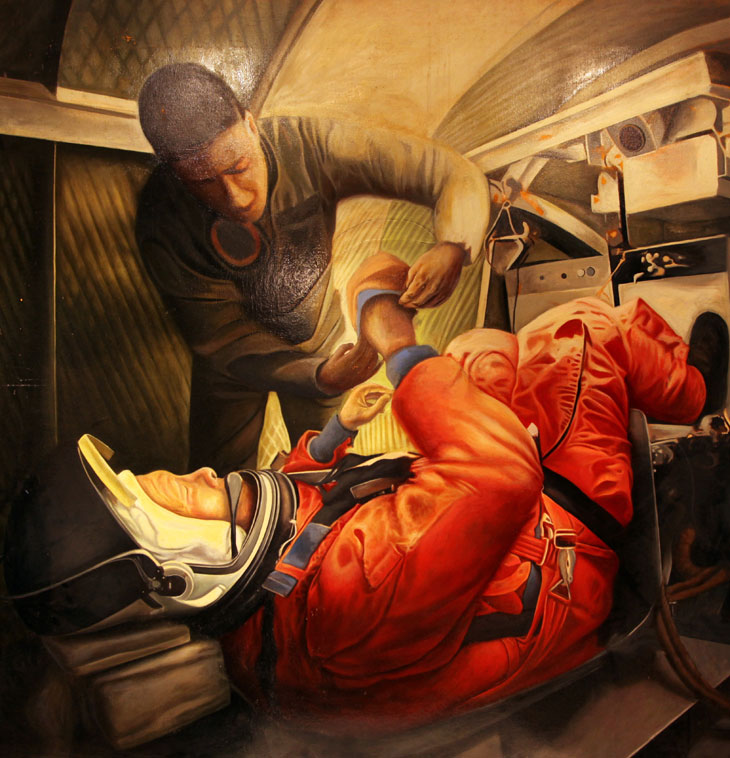
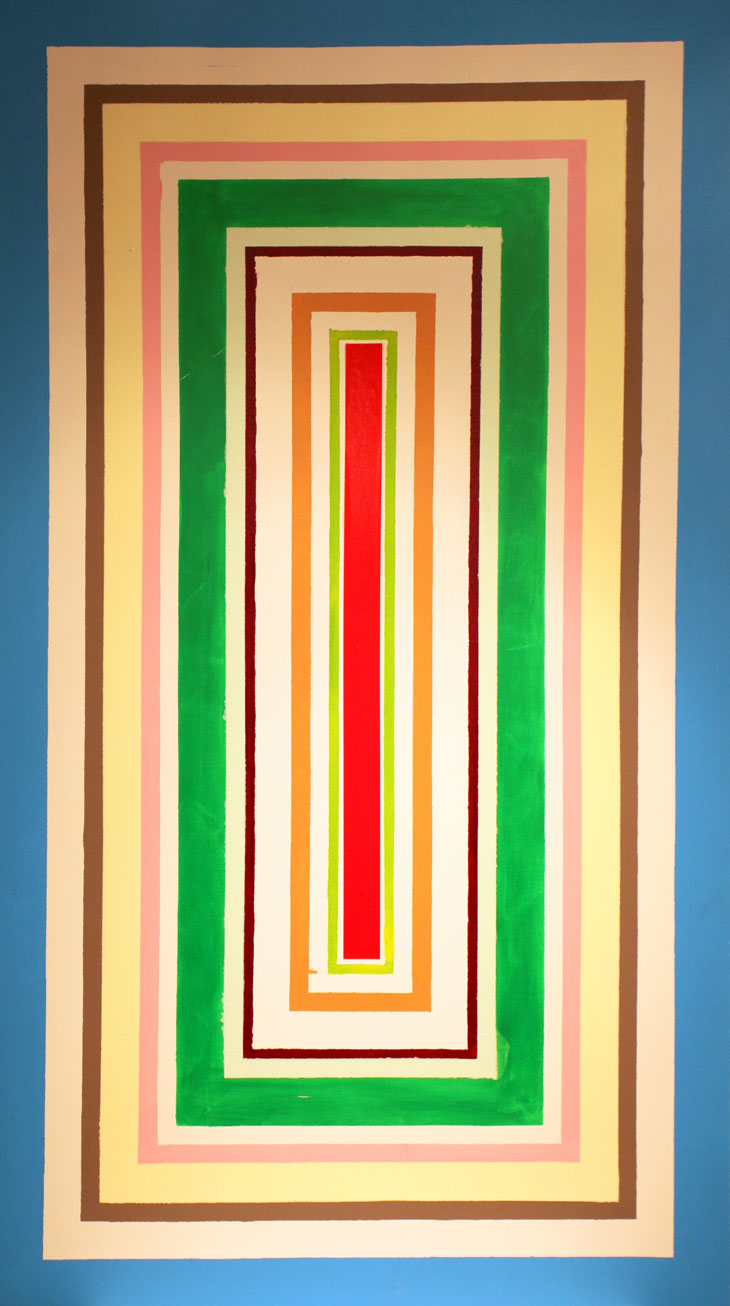
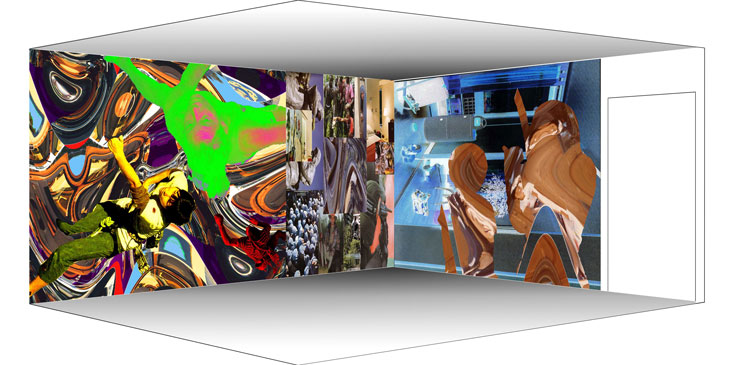
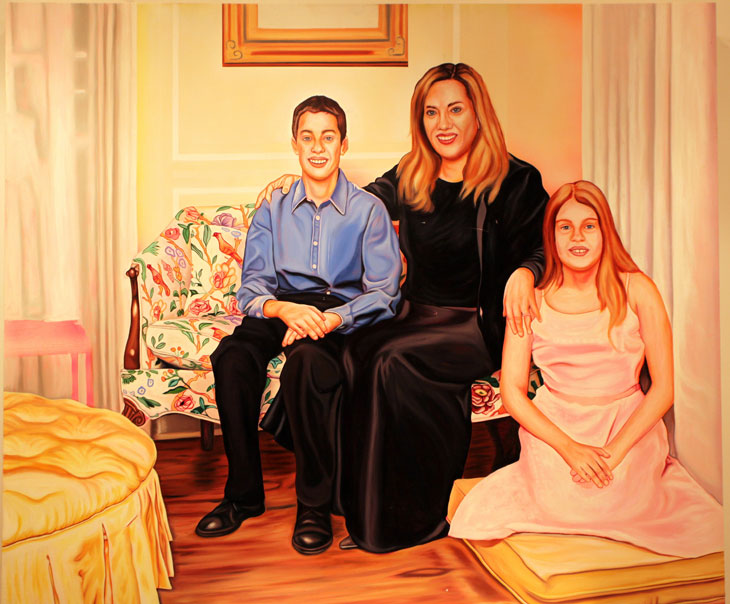
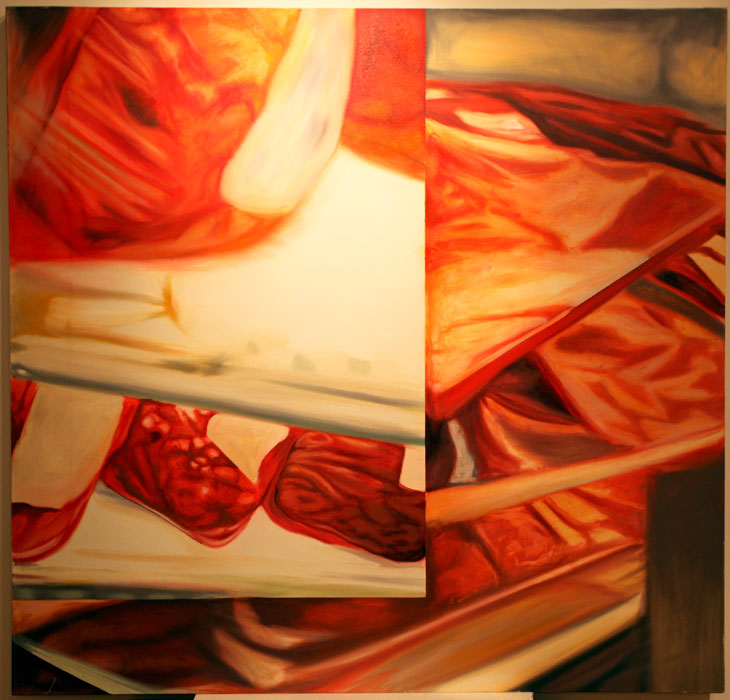
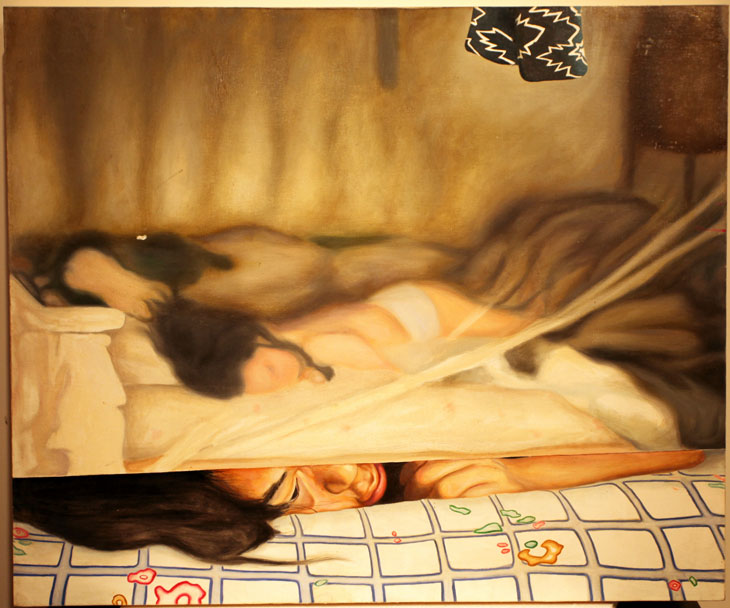
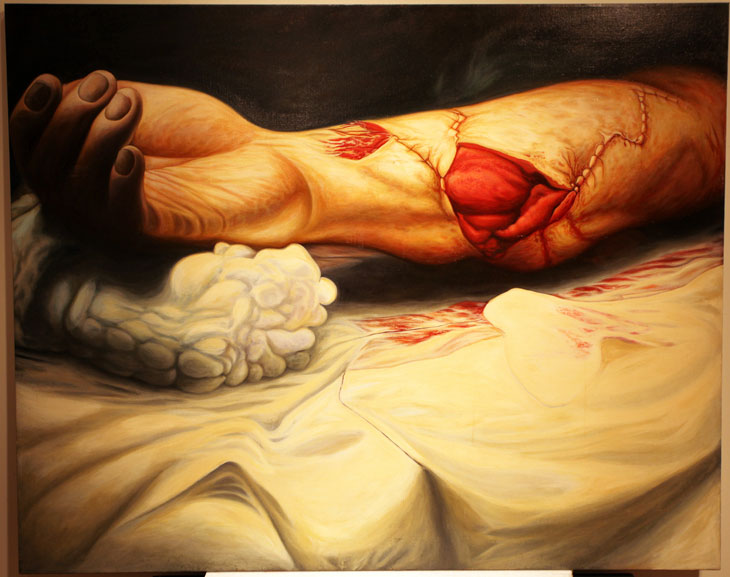


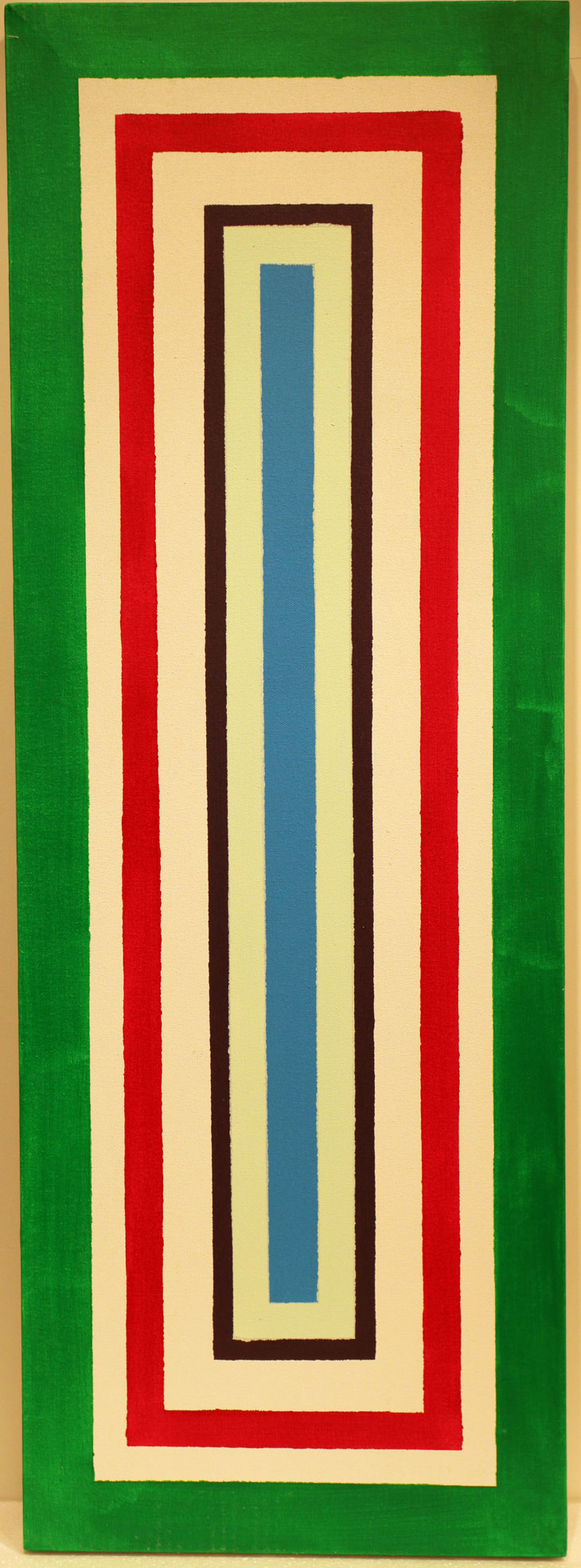
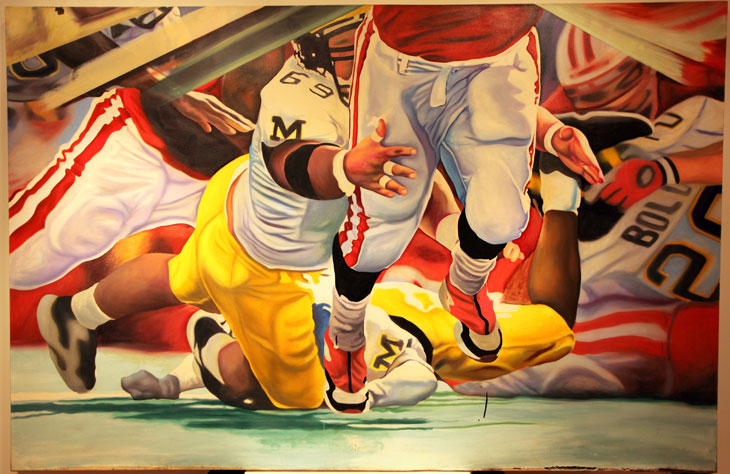
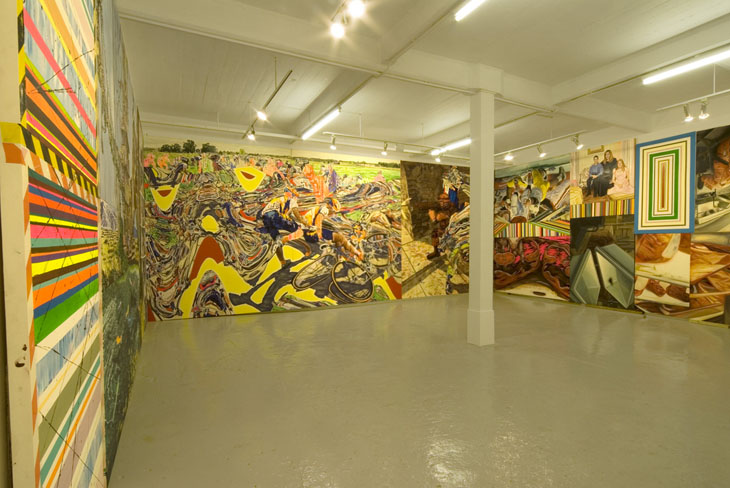
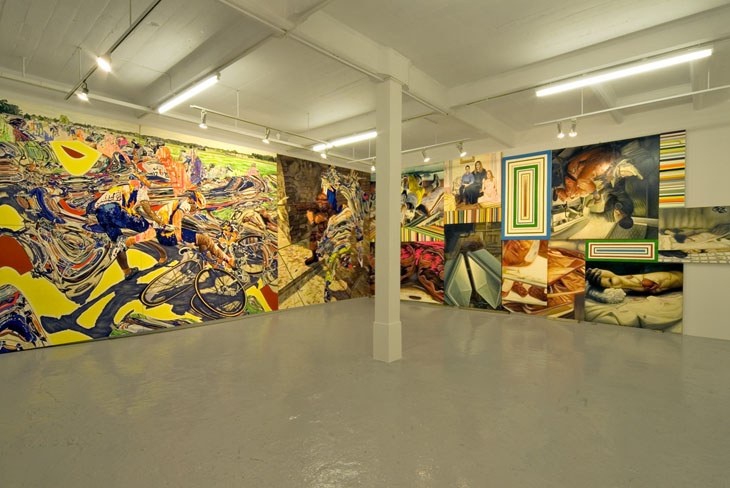
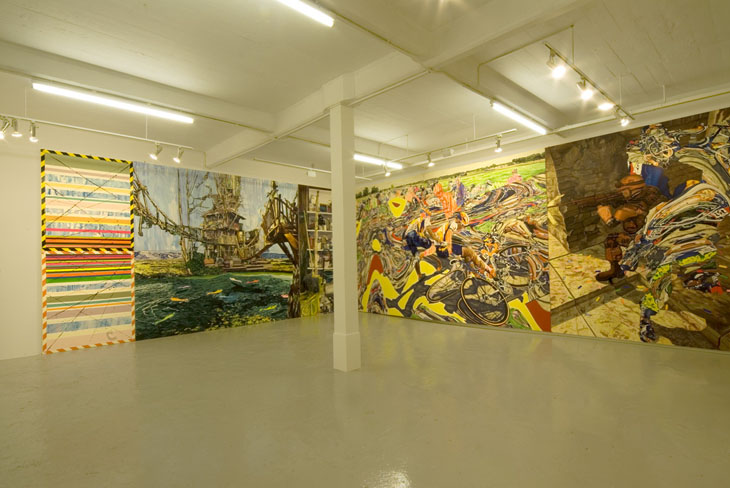
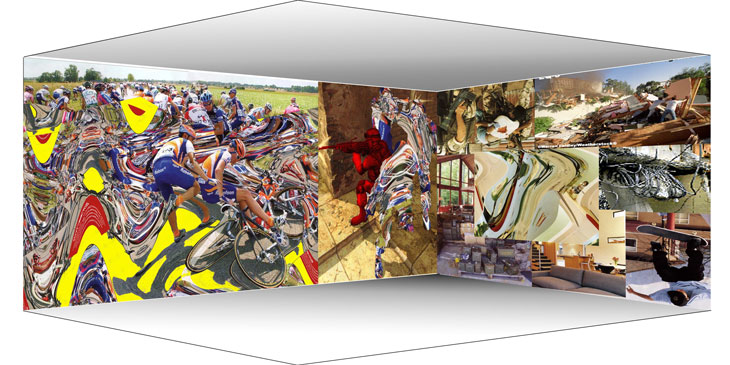
Jin Meyerson
Friendly Fire is a response to the death of Pat Tillman, the former professional American football player killed in April 2005 while fighting in Afghanistan. Tillman was shot by a member of his own unit, returning fire following an ambush. His death, recognized with the posthumous award of a Silver Star for gallantry, provoked a media outcry and forced millions of Americans to face up to the terrible realities of war. In his fluid, quasi-holographic depiction of the event, Meyerson portrays the speed, danger and confusion of warfare, severed by a deadly rain of fire unable to distinguish between friend and foe. Tillman himself is presented as some kind of contemporary Frankenstein, created from the red and white of the Arizona Cardinals and the green of the U.S. Army.
Steeplechase depicts a popular, violent sporting activity simultaneously characterizing the best and worst of American culture. A deliberate choice on the part of the artist, the subject matter was chosen precisely because of its unlikeliness, as a means to distance himself from the academic training he had received at art school. Meyerson manipulates images culled from a range of media to create heavily congested scenes of intense richness, in part an aesthetic response to the flat, arid landscape of rural Minnesota in which he was raised. Steeplechase is typical of his interest in kinetic imagery; objects or people in motion, scrambled by concussive force and the artist’s psychology into parabolic waves of hallucinatory colour.
In Meyerson’s installation, images from movies, video games, television news and sports channels, advertisements, computer graphics, books, and magazines collide in a chaotic and bewildering narrative filtered through the artist’s individual psychology. A self-confessed visual junkie, he invites the viewer to take a dizzying rollercoaster ride through a series of personal and impersonal experiences. The individual canvases, whose precise configuration is intended to be largely spontaneous, form temporary associations, blurring the line between conscious and unconscious. Painting itself is intended to be the primary experience, both for the viewer, who struggles to make sense of a barrage of vividly distorted visual imagery, and the artist, who experiments with numerous different techniques to apply paint to his canvases.



















































